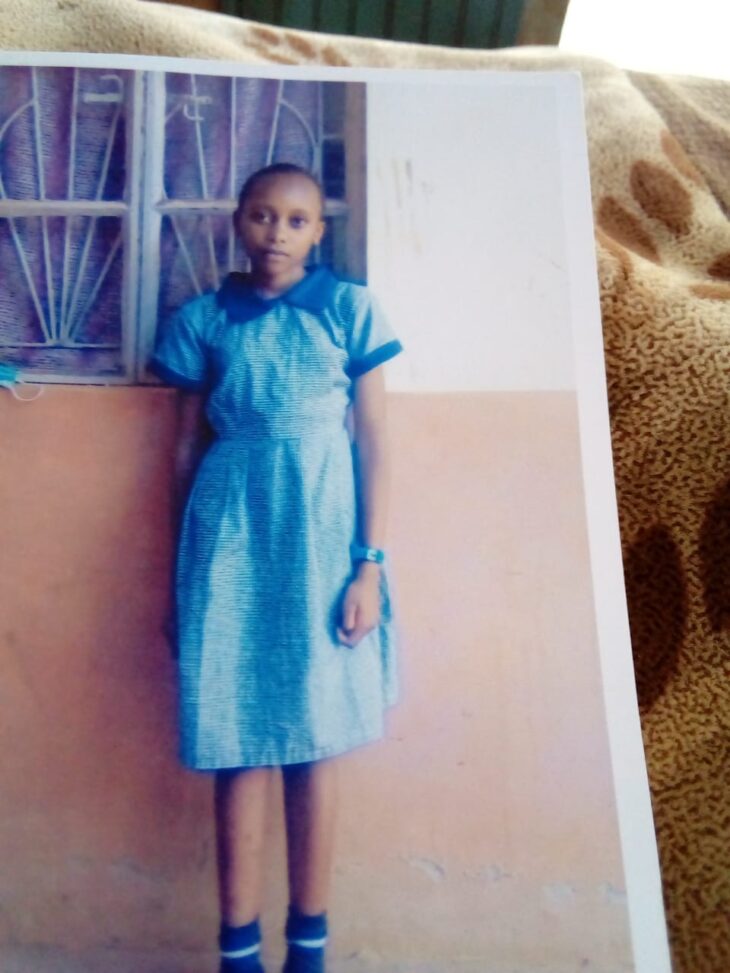NYERI, Kenya, Sept 22- The mystery killings of children, mostly girls, in Nyeri remains a puzzle for locals and police, with the big question being, who is doing this?
Detectives are looking at the pattern of the killings, with the hope of establishing whether they are linked.
“We could be dealing with a serial killer,” a detective privy to the ongoing investigations told Shahidi News.
But even before detectives can unravel the mystery killings, a family has been robbed of their daughters in the Mukurwe-Ini area, in the latest incident.
Margaret Waithera went missing on August 29 and a missing person report was filed at the Mukurwe-Ini police station.
On Monday night, the decomposing body of the 13-year-old was found dumped in a river, just a few metres from her home.
Locals found the body, which had been stuffed in a sack, inside River Rwarai near Ngamwa market.
“Our officers are already pursuing crucial leads,” Mukurwe-Ini Sub- County Police Commander Jesse Mwakiria said during an interview with Shahidi News.
Waithera’s body was discovered by local fishermen, who were attracted to the scene by the foul smell.
She was a form one student at Ngamwa Secondary school.
“Given the nature of the case, we cannot rule out the possibility of sexual assault. But the cause of death and what actually happened to her will be revealed through an autopsy,” he said.
Two other girls from the same area have been abducted and killed- in almost a similar circumstance.
For example, police say another girl who went missing on August 16 was later found killed.
Sharlene Wangui was abducted from home by an unknown assailant.
“We have since established that a bearded man lured Wangui as she was playing from her friends. We are however yet to know who he was and whether he is from Gikondi,” another detective dealing with Wangui’s case said.
Wangui’s decomposing body was found on September 8 stuffed in polythene bags near her home.
“We could be looking for the same killer,” the detective added.
In Othaya, a neighbouring constituency still in Nyeri County, a 4-year-old baby girl was abducted from her home and later found murdered.
The incident happened a year ago and since then, no one has been put to book for the gruesome killing.
Sylvia Wanjiru’s body was found floating in River Chinga two weeks later after she went missing on October 31, 2020.
An autopsy on her body revealed that she had broken limbs, as well as the skull, and three stab wounds.
“She died from severe head, chest abdominal, and genital injuries secondary to sharp and blunt trauma,” reads the report seen by Shahidi News.
Such incidents have been common across the country since last year.
In July, A 20-year-old man has shocked Kenyans after he admitted to kidnapping and killing more than 10 children in cold blood.
Masten Milimu Wanjala’s arrest came after numerous reports from parents in Nairobi held protests complaining of missing and disappeared children who were later found dead.
Wanjala told detectives that the latest killings were of Charles Opindo Bala, 13, and Junior Mutuku Musyoki, 12, who were reported missing on June 30 and July 7, respectively.
The Directorate of Criminal Investigations said, “Wanjala, who is believed to have murdered over 10 minors, led detectives to the spot where he committed the beastly act and disposed of the bodies in Kabete. He had earlier contacted Musyoki’s mother Felista Wayua, demanding a ransom of Sh50,000.”
According to a report by Missing Child Kenya, a non-governmental organization that tracks cases of missing children, 242 children were reported missing in 2020, including 117 boys and 125 girls.
UNICEF has since condemned the kidnapping and murder of children in Nairobi and other parts of Kenya and called for those responsible to be held to account, while additional measures to protect children are taken.
“UNICEF condemns in the strongest possible terms the kidnapping and killing of children – this is one of the worst crimes imaginable and there can be no excuses for it,” UNICEF Representative to Kenya Maniza Zaman said in July 2021.
“As well as holding the perpetrators to account, we need to redouble our efforts to ensure that children are protected wherever they are – at home, in schools and in public spaces. We need psychosocial support for child victims and their families, and we need to ensure that the public is vigilant and knows how to recognize and report any kind of violence against children.”
In response to persistently high rates of violence against children in Kenya, the Ministry of Labour and Social Protection, with support from UNICEF, last year launched a five-year National Prevention and Response Plan on Violence against Children.
This includes a public information campaign ‘Spot It, Stop It’ which aims to raise public awareness of violence against children and how to prevent and report it. Children and adults are encouraged to speak up about violence, seek support from a trusted adult, a children officer, or the Child Helpline on 116 (toll-free), and report cases to the police.
“It is important to empower communities to look out for the safety and protection of children,” Maniza Zaman added.
“We need a ‘whole of society’ approach, involving the Government, communities, parents and caregivers, teachers, and children themselves. No child should ever go through the traumatic experience of being a victim of violence and abuse.”
The 2019 Violence Against Children Survey found that among those who participated in the survey, 46 percent of 18 to 24-year-old young women had faced at least one type of violence – physical, emotional, or sexual – during their childhood, as well as 56 percent of young men in the same age group.
Want to send us a story? Contact Shahidi News Tel: +254115512797 (Mobile & WhatsApp)



